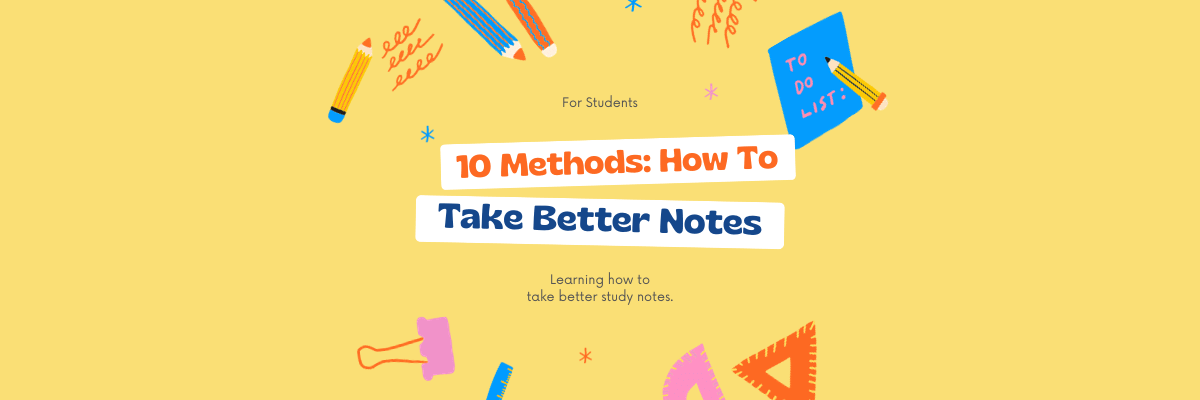
10 Best Note-taking Methods for Students
Record, transcribe and summarize conversations with one click.
Learning a whole new subject is exciting—until you’re knee-deep in assignments and tests. Before you know it, it’s the night before an exam and you’ve forgotten everything you’ve learned and can’t piece together your folder of haphazard notes.
That’s why you need to learn how to take notes effectively. Even the most unorganized person can benefit from a note-taking system, however, you learn. Personally, I find paper notes beautiful but impractical. I opt for a mix of Notion pages and Google Docs to sort my study materials when I’m learning new copywriting or marketing techniques.
If you need to ace that next test, keep reading. I’ve shortlisted 10 popular note-taking methods with visual examples. Plus, you’ll learn helpful tips on making good notes and keeping a habit!
How to take good notes by prepping before class
To avoid rummaging in your bag for scraps of notepaper and the book you forgot to bring, here are some helpful tips on getting prepared for any class before it starts.
Review your course material
Familiarize yourself with the subject of the class. Read your previous notes, assignments, and recommended reading so you’ll be up to speed and ready to continue without feeling confused.
Keep your notes organized
Having a note-taking system, or at least a specific place you keep your class notes means you’ll have everything to hand when you need it. Any further notes you make this time will accompany the ones you made last time. This is a lifesaver when it comes to exam revision!
Bring the supplies you need
Whether you’re taking notes on your laptop or good old-fashioned pen and paper, do a quick check of your bag before you leave for class. This could include paper, pens, folders, highlighters, and sticky notes.
Notta offers the most integrated AI lecture notes, summaries, and action items so nothing gets missed.
How to take notes with 10 best note-taking methods
The Outline Method
Best for organizing information that has a clear structure
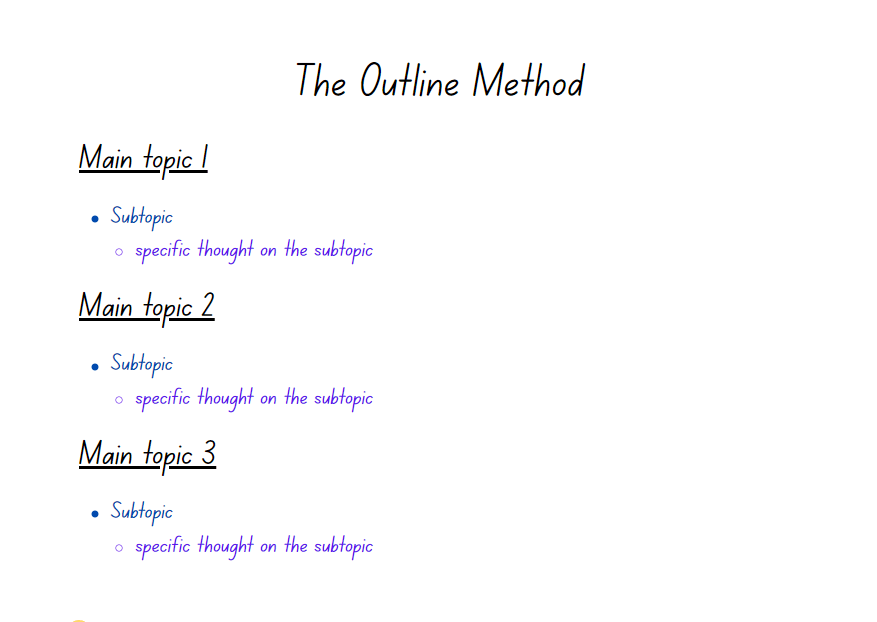
Using the Outline method works for virtually any subject or context, as long as the information is provided to you in a logical, structured format. It involved writing main topics, then organizing subtopics and breaking down ideas further and further in a hierarchy.
For example, a course that explores one topic at a time would be simple to organize this way. If you need to revisit topics, you can continue adding new subtopics and thoughts underneath the existing ones.
This might be easier on a digital note-taking system like Notion as it’s easier to expand but can work well in pen and paper.
The Cornell Method
Best for creating a study guide for academic subjects
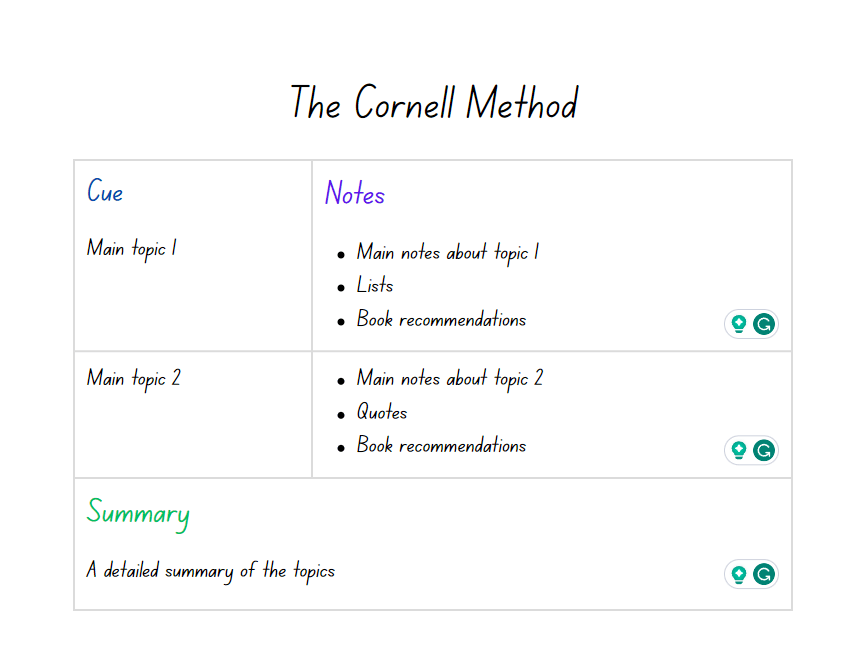
Cornell professor Walter Pauk designed this method in the 1950s as a way for his students to create their own study guide as a point of reference. You start with ‘cues’ in your first column, then elaborate on these cues in the second column with detailed notes, graphs, quotes, and reading recommendations. At the bottom of your page, you summarize the most important elements you’ve covered. This method is simple and quick to use with no learning curve, making it ideal for any subject.
The Boxing Method
Best for aesthetic note-keeping
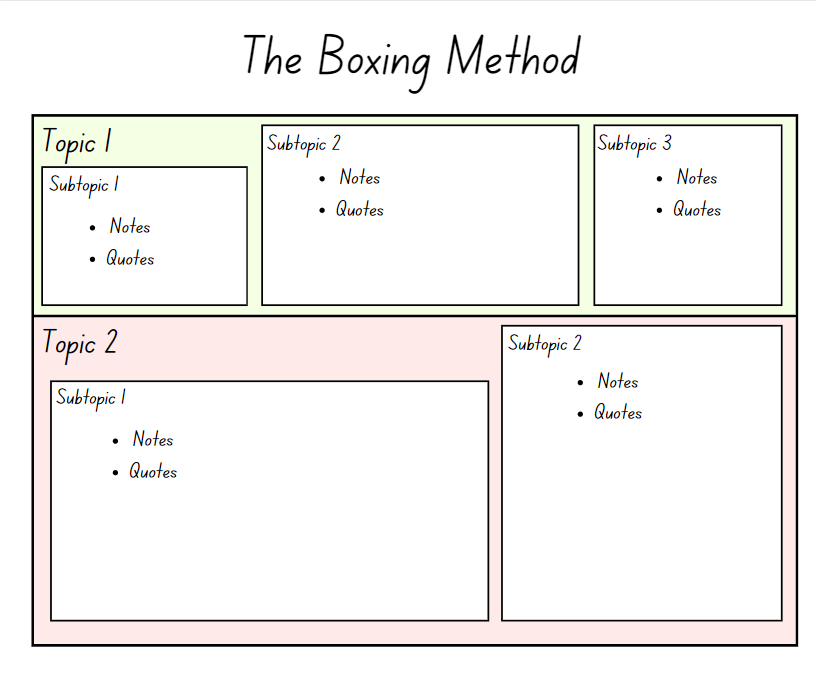
Using boxes, you can separate your main topics into chunks of information that are easy to refer to if you prefer visual note-taking. It groups subtopics and supporting information together. This might work best when you’re rewriting rough notes into a more aesthetically pleasing format, for example, when you’re revising.
It doesn’t matter if you prefer digital note-taking on an app like Goodnotes, or have a paper journal—it works for both.
The Charting Method
Best for comparing data or statistics
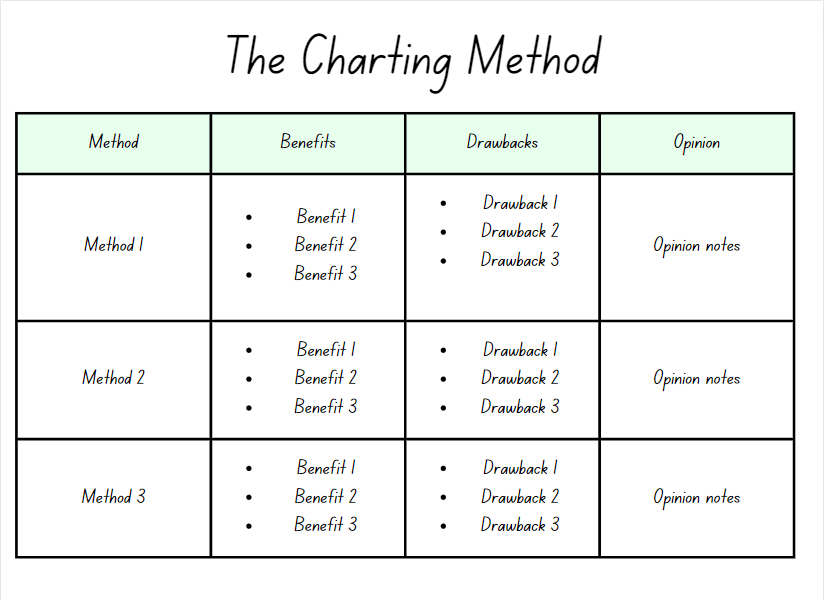
In some subjects like math or sociology, you’ll need to find an easy way to compare data sets. The charting method organizes your information into a table, with columns and rows to show how data relates to one another. It’s a quick method that is best for logical information and works for digital and traditional note-taking, though a spreadsheet would make this kind of note-taking a breeze.
The Mapping Method
Best for visually understanding the relationships between ideas
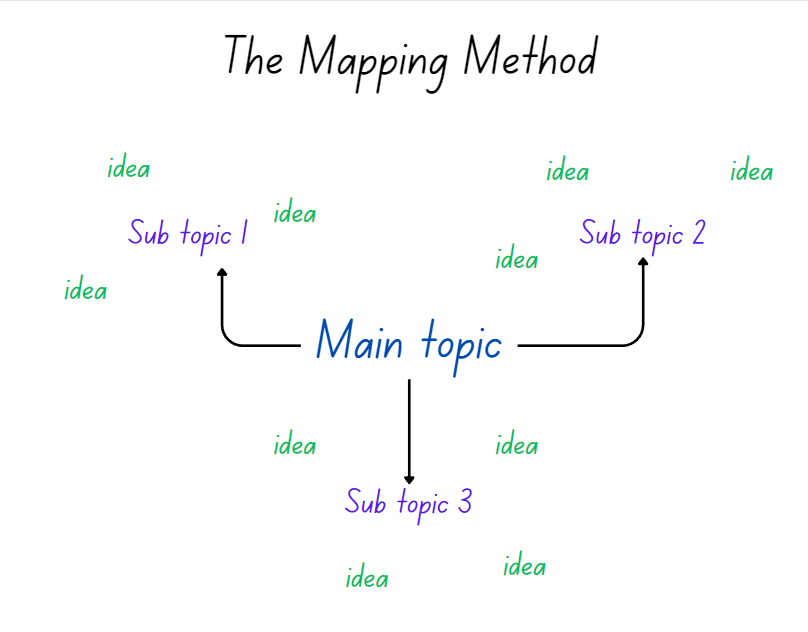
This is a visual note-taking method that’s similar to the outline method. Start with a main topic and list subtopics and further specific ideas and concepts. Instead of writing them in a list, however, you’ll write them like branches of a tree. Sub-topics branch off the main topic and specific ideas branch off from those. It’s a helpful format for unstructured studying because it’s fairly easy to add information to it at a later date.
The Zettelkasten Method
Best for storing and connecting large volumes of information
Probably the most detailed, in-depth method on our list. The Zettelkasten method is more of a personal encyclopedia of knowledge. Think of it as a giant web of connected information. You can create snippets of information either as digital or paper notes. Then, link related notes by category or other tags.
The Split Page Method
Best for broad topics
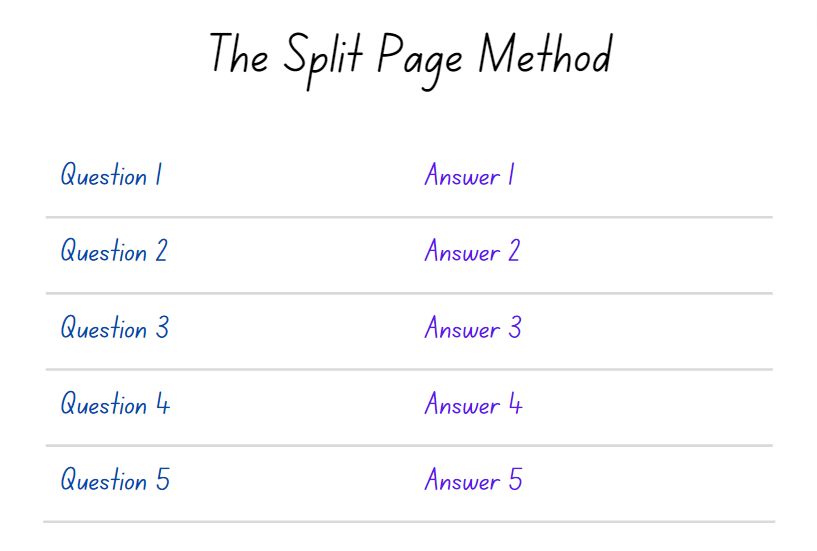
For subjects with a lot of unstructured information, the split-page method of taking notes can really help you condense the key points and ideas. Simply divide your page into two halves. It’s flexible, meaning you can use it however you like, whether you choose questions and answers, keywords and definitions, cues and detailed notes.
Sentence Method
Best for condensing lots of information in chronological order
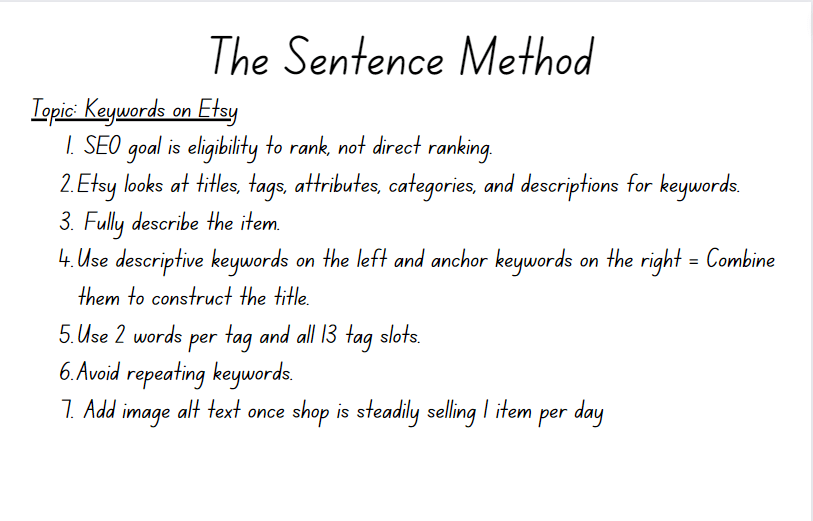
If you have a lot of information that’s coming at you thick and fast, the sentence method is a quick way to write down everything that’s relevant. Write out in single sentences the key points you need to remember instead of trying to copy the class content verbatim. To help keep yourself organized, date and title your notes so you understand the context.
Flowchart Map Method
Best for visualizing relationships and steps in your information
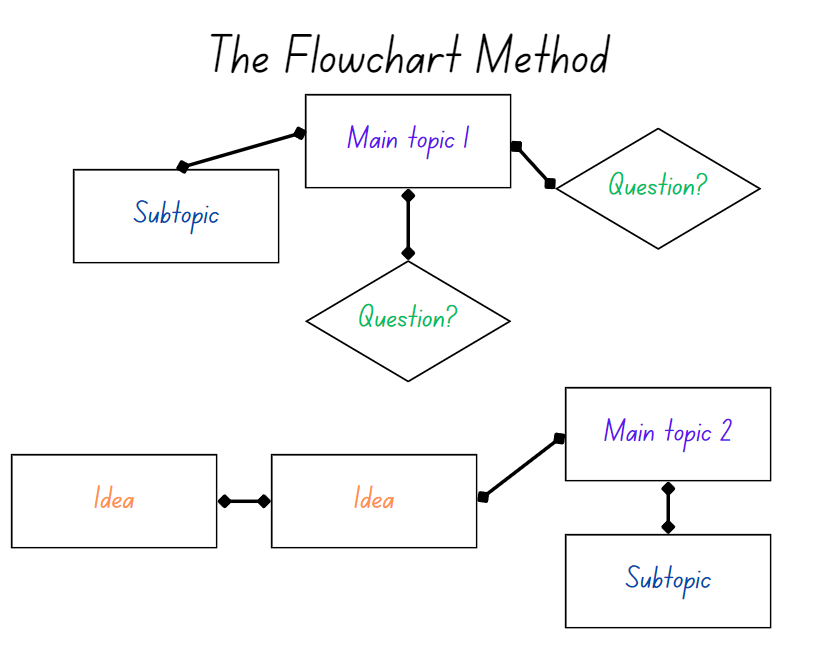
Flowcharts work in a similar way to the charting method, where you can see the relationships between data sets and concepts. With a flowchart, you can visually connect this information and include different kinds of ideas, questions, and categories. It’s more flexible than a table, plus you can go further and see how different topics connect.
The QEC Note-Taking Method (Question, Evidence, Conclusion)
Best for proving a specific idea or concept with critical thinking
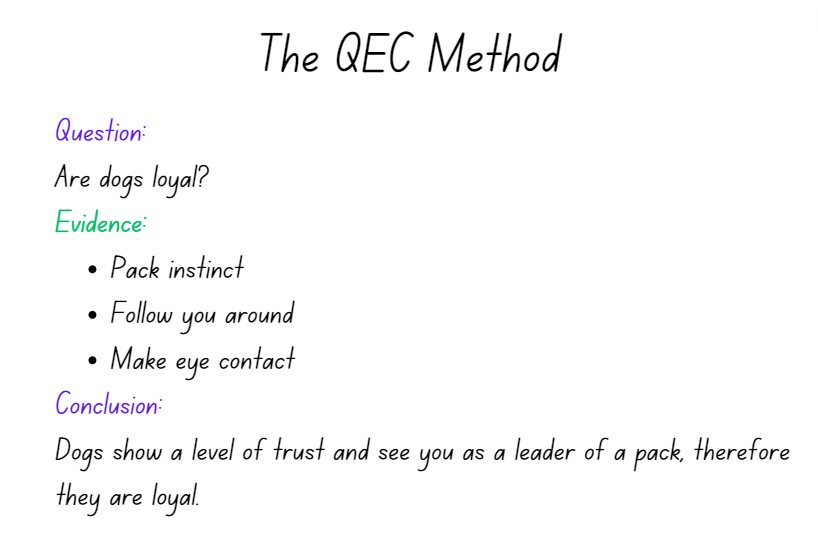
If your subject requires deep thinking, the QEC method can test your analytical brain. You’ll start with a question about the topic you want to understand. Next, list the evidence, both for and against, that helps provide an answer to this question. Finally, once you’ve weighed up the evidence, you can write your conclusion. This works particularly well for subjects such as English or History where there may not be one ‘correct’ answer.
How to use your computer to take notes
How to record and transcribe verbatim with Notta
Record the audio or video from your lecture, either in person or online.
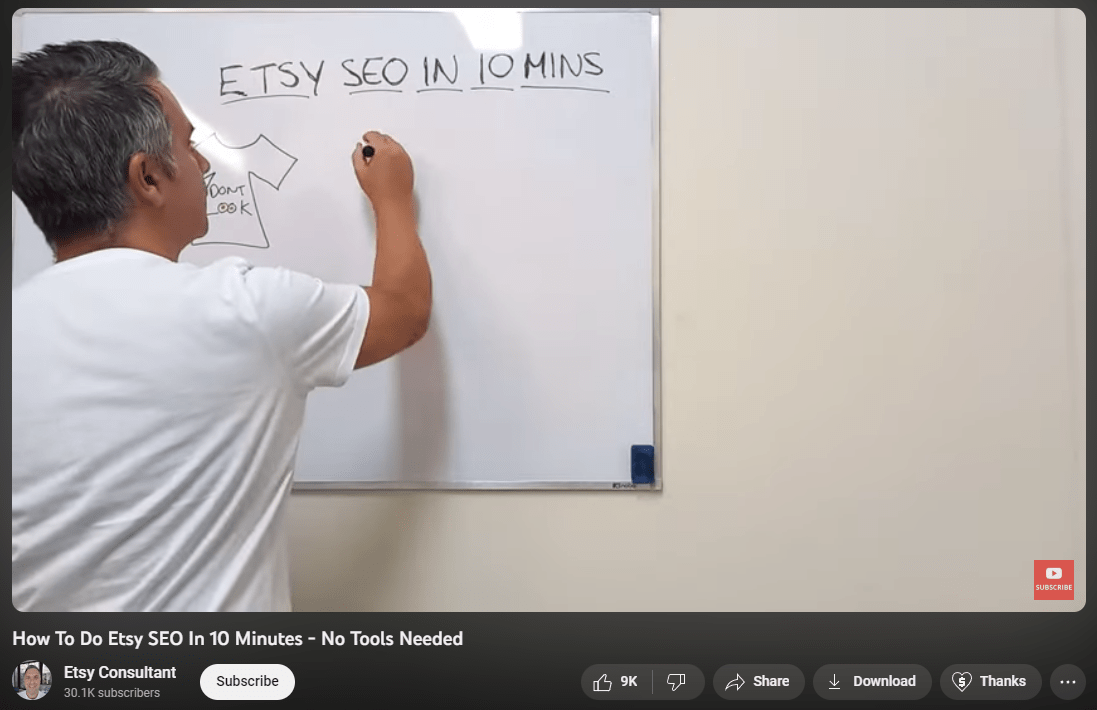
Log into Notta and go to your Dashboard.
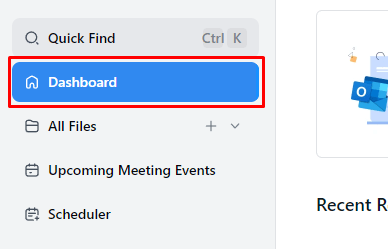
Select ‘Import Files’ and either drag and drop the file from your device or paste the YouTube, Google Drive, or Dropbox URL into ‘Import from link’.
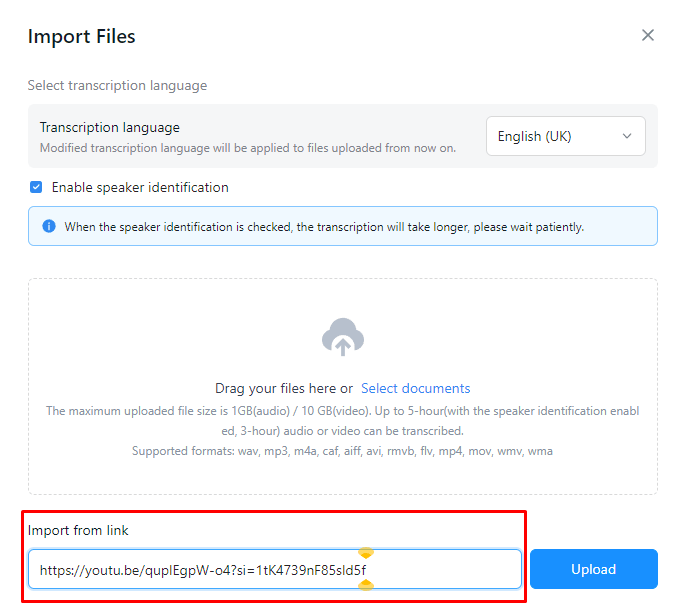
Review your full transcript by clicking on the file name under ‘Recent Recordings’.

Add notes and images to support your transcription. This could be reference materials, things you need to do, or questions you want to ask.

Click the ‘Download’ icon to export your transcript text in a variety of formats. You can transfer the text to your favorite note taking system.
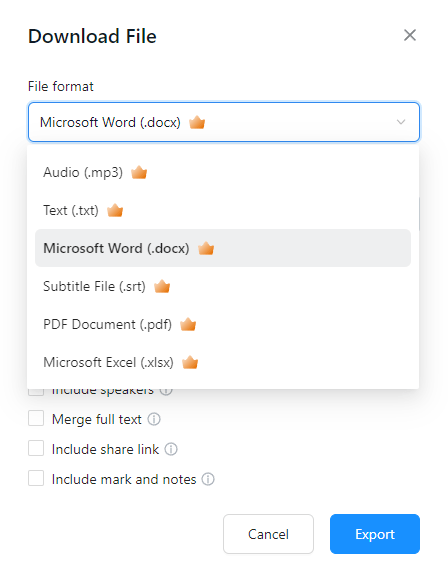
How to analyze your notes with Notta
When viewing your transcript, select an AI-powered summary template to create a summary with Notta. This may take a few minutes for a longer text.
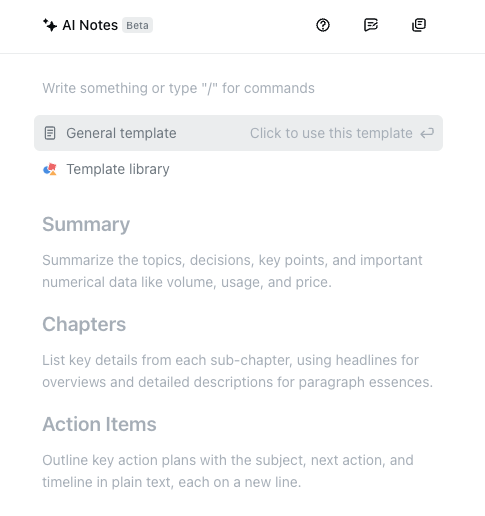
View your AI summary broken down into three parts:
Summary: a condensed version of your full transcript
Chapters: The most important points mentioned in your notes
Action Points: ‘Next steps’ list based on the transcript text
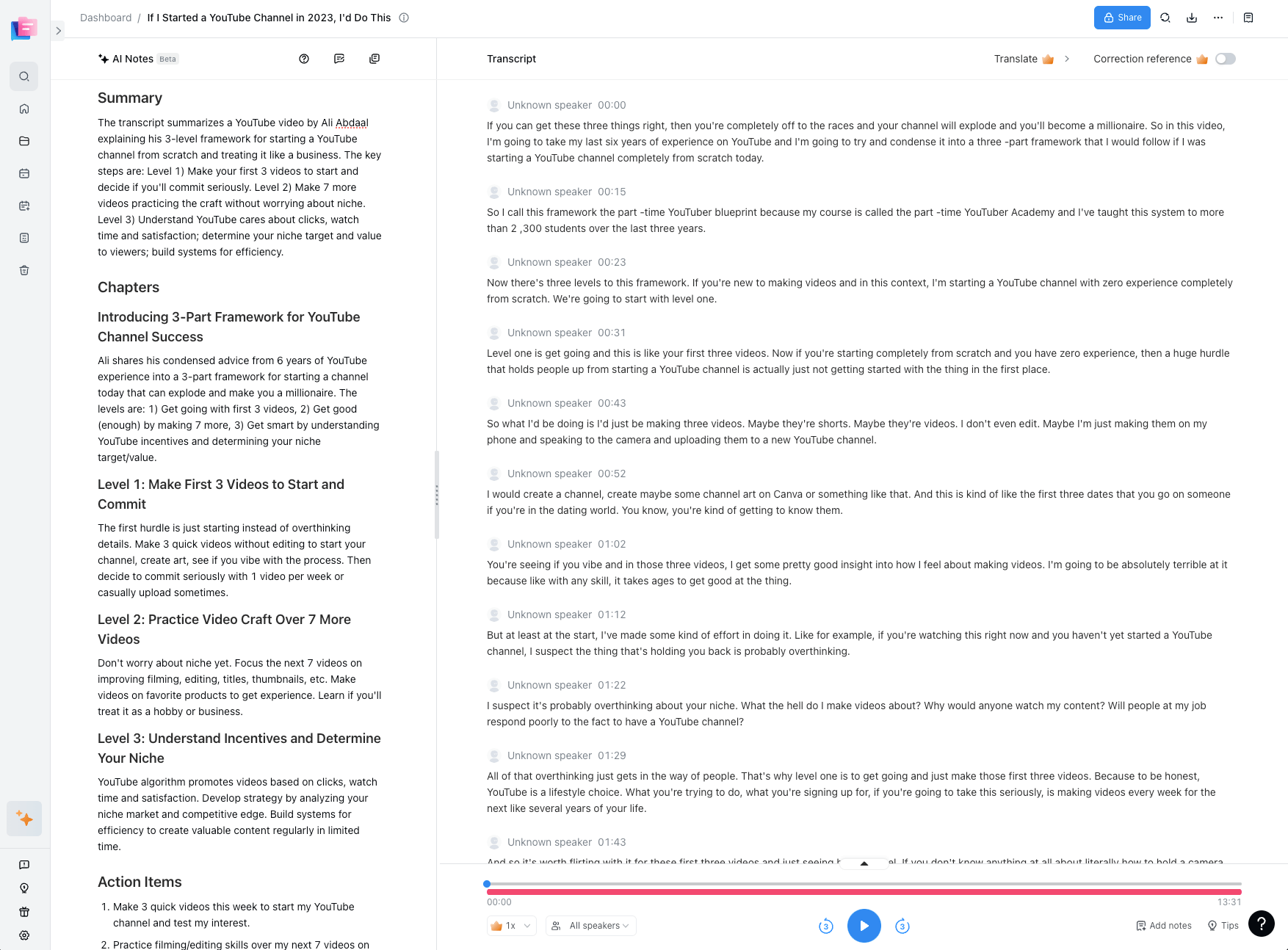
3. Copy or reference the summary in your note-taking system. For example, I used the Notta AI chapters to speed up notes taken using the sentence method.
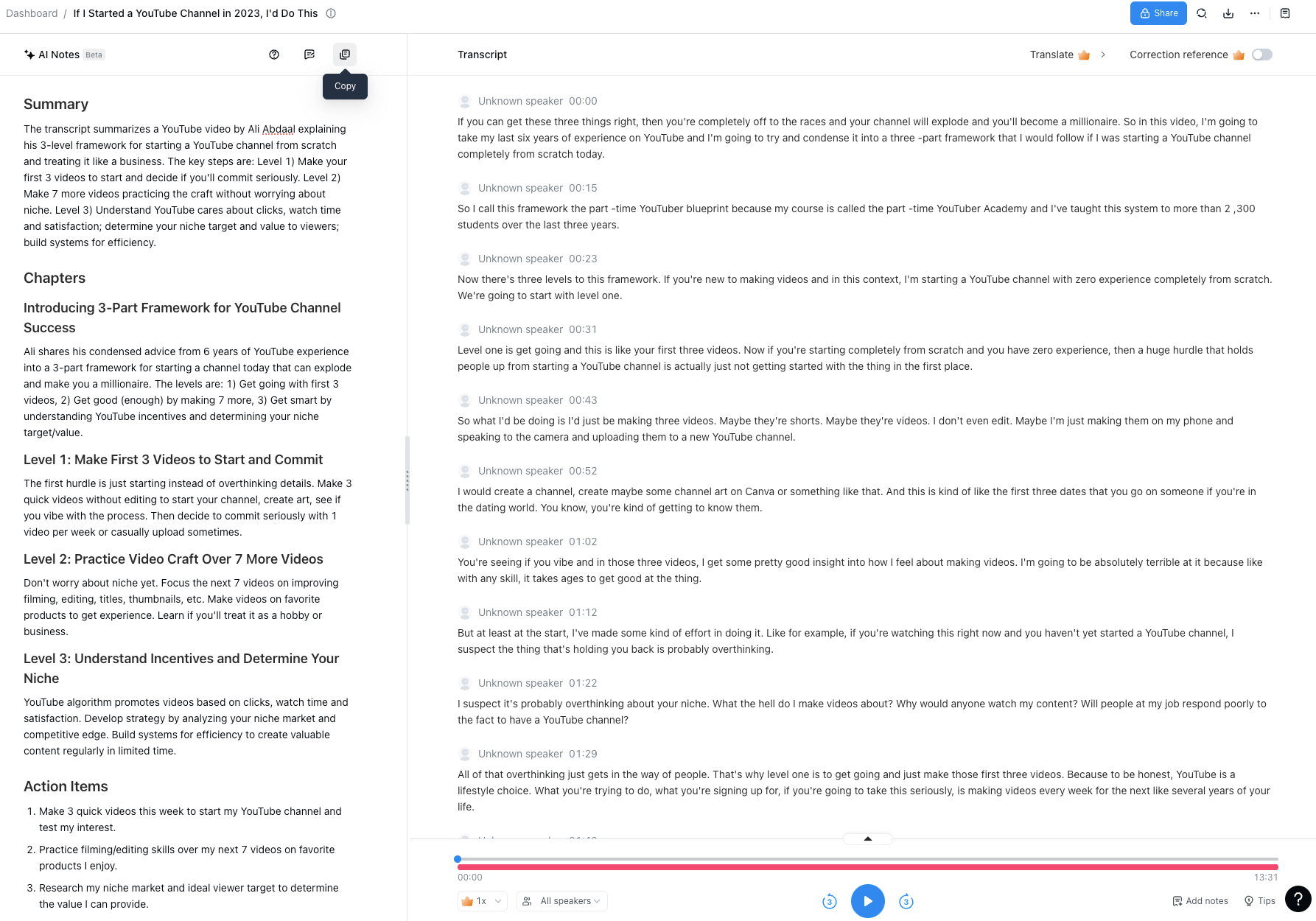
Notta can convert lectures, training videos and other conversations into text with 98.86% accuracy in minutes. Focus on the content, not manual note-taking.
Tips for taking effective notes in college
Pick a specific place for your notes
Whether you use a Notion database or a ring binder full of paper documents, you need to keep your notes together in one place. You don’t need the added stress of misplacing vital notes when you need to revise!
Categorize your notes
Categorizing your notes makes it easy to find specific information when you need it and keeps similar subjects together. You can categorize by date, lecturer, or subject, or even by a specific quote or book.
Create abbreviations
If you’re taking notes by hand, using abbreviations can speed up the note-taking process so you don’t miss out on information during a class. It also saves space on the page. You can use word abbreviations like ‘w/o’ for ‘without’, or even symbols like arrows and stars to highlight questions and key items.
Write notes selectively
Be selective about what you write—don’t attempt to write everything verbatim, unless you’re recording the speech using a tool like Notta. Instead, summarize the most important points with keywords and bullet points.
Give a reason why
When you’re summarizing lots of information, the reason for copying it down in the first place can get murky. When you take a note, jot down what it relates to. Why did you write it down? When you revisit the notes, it’ll make sense in context.
Ask for clarification
Highlight statements or ideas you’re confused about and need further clarification on, then make time to ask your lecturer for some guidance.
Get the most out of your notes
Review your notes: To make sure you fully understand a topic, summarize the key points in your notes to explain it in your own words.
Test yourself: Create flashcards with questions and statements relating to your subject and see if you can answer them without looking at your notes. Did you struggle with any topics? Now you know what areas need further study.
Ask for support: Your professor or teacher is there to help you understand your course properly. If you need extra help, ask! They will direct you to further reading or help explain a confusing concept.
Repetitive revision: Cramming the night before an exam doesn’t work. The best way to retain information and ace your next test is to revise a little and often. Revisit notes after the end of each class and schedule in time during the week.
In summary
Note-taking only seems daunting when you haven’t found a system that works for you. To learn how to take better notes, try out different methods! If you’re a visual learner, your favorite methods won’t be the same as someone who prefers linear notes.
If you study various or complex subjects, you might even find it helpful to combine styles. For example, art and design might use the Boxing method to learn about different designers’ styles and the Charting method for measuring different materials. Now go ace that test!